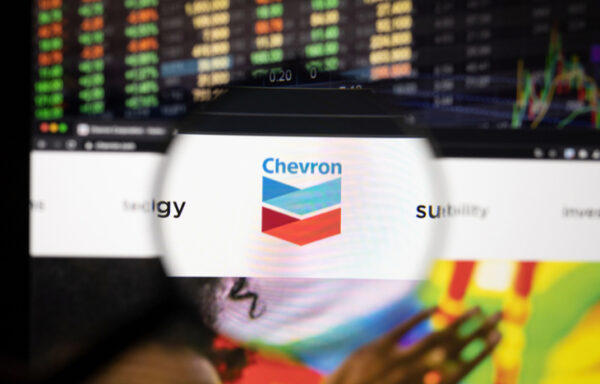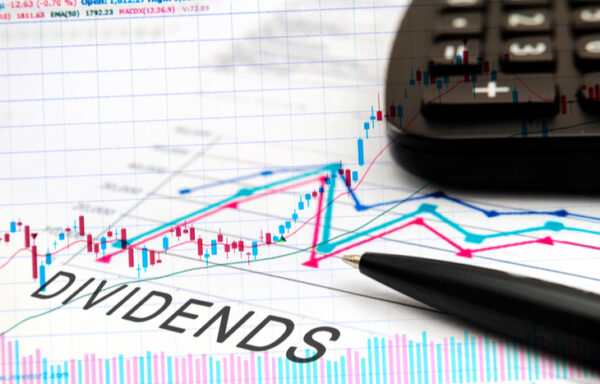How to Invest in Dividend Stocks
Dividend stocks are often a great investment since they can provide both capital appreciation as well as income. Yet many people don’t know how to invest in dividend stocks.
In this article, we’re going to tackle that question. We’ll also look deeper into why you might want to consider investing in dividend stocks… and some of the pitfalls to watch out for.
We’ll look at strategies specific to dividend stocks and provide resources on how to buy stocks in general. That way, when you’re ready to buy, you’ll know exactly what to do and how to do it.
So let’s get started.

What Are Dividend Stocks?
Before we dive into how to invest in dividend stocks, we first need to take a look at what exactly these stocks are.
Simply put, dividend stocks are stocks that pay out or distribute a percentage of their earnings to shareholders as dividends on a regular and periodic basis.
Nearly 84% of the companies in the S&P 500 index pay dividends. But why would a company engage in this practice? It’s simple: Companies need to find ways to give shareholders value in exchange for their investments.
There are several ways a company can provide value to shareholders:
- Invest capital in projects that generate large returns and increase the price of the stock
- Engage in share buybacks that can increase the price of the stock
- Distribute dividends.
The good thing about dividends for investors is that the quality companies that issue them tend to distribute them on a regular basis, which creates a steady flow of income from shareholder investments.
Of course, you can invest in great stocks like some blue chip stocks that don’t pay dividends, which is absolutely fine if you’re primarily seeking capital appreciation. But if income is your thing, dividend stocks are a great option. Generally, dividend stocks can earn you much higher yields than government or corporate bonds – especially when you also take capital appreciation into consideration. With that being said, lets learn how to invest in dividend stocks.
How to Invest in Dividend Stocks
The first thing you’ll need to do when learning how to invest in dividend stocks is to identify the stocks that pay dividends. Simple, right? When beginning your research, you may simply want to start with large companies that you’re familiar with.
The following are dividend stocks to buy in the Dow Jones Industrial Average you’ve likely heard of:
- Exxon Mobil (NYSE: XOM)
- IBM (NYSE: IBM)
- Boeing (NYSE: BA)
- Verizon (NYSE: VZ)
- Coca-Cola (NYSE: KO)
So let’s say that you’re an avid soda drinker and you decide you are interested in purchasing shares of Coca-Cola. Should you just take the plunge and dive right in?
Not so fast.
Once you’ve picked a company you’re interested in, the next thing you’ll want to do is evaluate that stock. But how do you evaluate a dividend stock?
Let’s take a closer look.
Evaluating Dividend Stocks
When learning how to invest in dividends stocks, one of the most important metrics that you will need to look at is the dividend yield. The dividend yield is a measure of how much dividend the company pays compared with the total price of the stock.
As of the afternoon of August 10, the dividend yield for Coca-Cola was around 3.43%. You can calculate that number by dividing the annual dividend of $1.64 – seen under “Dividend (TTM)” in the link above – by the day’s share price, which was right around $47.77.
Is this a good dividend yield? That’s an excellent question. Generally, you can get a sense of what’s a good yield by comparing the stock you picked with other similar stocks.
Since Coca-Cola is a Dow Jones stock, one way to compare it to another is to look at the dividend yield compared with other Dow Jones stocks. You’ll notice that Coca-Cola is on the higher end of the spectrum, which can be a good sign.
Another thing you can do is compare Coca-Cola with other beverage brands like PepsiCo (Nasdaq: PEP). As of August 10, PepsiCo is yielding only around 3.03%, which means that Coca-Cola gets you more yield for your money.
Red Flags to Watch
Now that you have some idea of how to invest in dividend stocks, there are certain pitfalls that you’ll need to be aware of. For example, what if a stock has a really high dividend yield?
On the one hand, you may think a really high yield is good. After all, it means you are earning a higher amount of income with each payment. But it could also be a sign of trouble. After all, if a company distributes too much of its earnings out to investors, it may not be investing enough back into the company to continue to spur its own growth.
Another red flag to look for is a dividend stock with a high pay-out ratio. Similar to the dividend yield, if the payout ratio is too high, it can mean trouble. In fact, if a payout ratio is 100% or higher of earnings distributed, that may mean that future dividend payments are in big trouble. The dividend may be slashed or stopped altogether.
And of course, you also want to be aware of the underlying fundamentals of the company. In general, you should understand how the business works and keep an eye on its profits, revenues, cash flows and related metrics in financial statements.
If you examine these metrics and determine that the dividend stock is of high quality, then you’re ready to go ahead and purchase the stock. For more information on how to do that, you’ll want to check out our article on How to Invest in Stocks.
Learning How to Invest in Dividend Stocks Can Help you Win Big
When you put together your stock portfolio, a great strategy is to diversify. You can include everything from pot stocks to biotech and energy. You may even consider looking at some penny stocks, even though those tend to be riskier.
However, learning how to invest in dividend stocks can also be a key portion of your portfolio to help you generate solid income. For more analysis and views on dividend stocks, check out these high-yield dividend stocks to consider.
Now that you have a good idea of how to invest in dividend stocks, it’s time to go ahead and make your mark. Identify some quality stocks and start generating some investment income today.
Read Next: How to Pick a Stock
[adzerk-get-ad zone="245143" size="4"]About Brian M. Reiser
Brian M. Reiser has a Bachelor of Science degree in Management with a concentration in finance from the School of Management at Binghamton University.
He also holds a B.A. in philosophy from Columbia University and an M.A. in philosophy from the University of South Florida.
His primary interests at Investment U include personal finance, debt, tech stocks and more.





